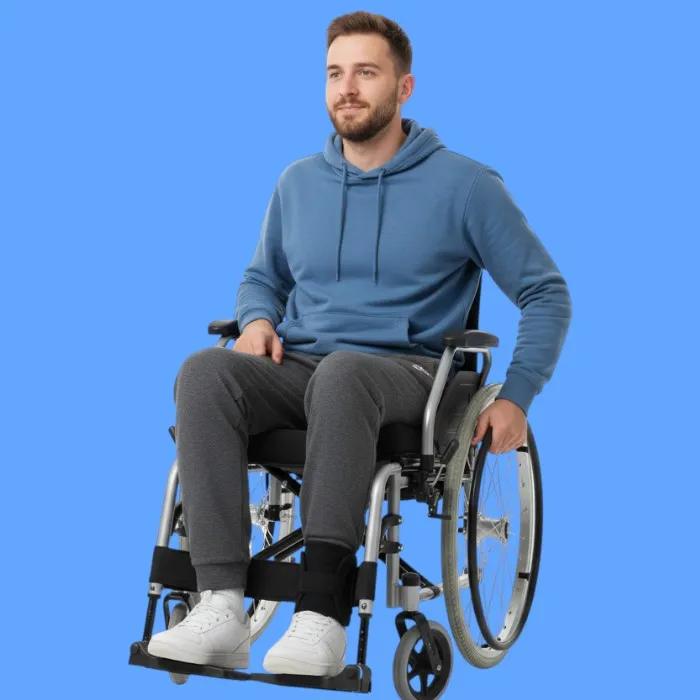what is hemiplegia?
Hemiplegia is a medical condition that causes loss of movement in one side of the body, usually affecting either the left or right side entirely It occurs due to damage in the brain or spinal cord and affects the person's ability to control muscles on that side.
In many cases, hemiplegia happens suddenly, such as after a stroke, and may be accompanied by sensory loss or speech difficulties.
what are the causes of hemiplegia?
There are several causes that may lead to hemiplegia, including:
- Stroke caused by blockage or bleeding in a brain artery.
- Severe head injuries such as accidents or falls.
- Brain tumors pressing on motor areas.
- Central nervous system infections like meningitis or encephalitis.
- Autoimmune diseases such as multiple sclerosis.
- Congenital brain disorders in children like cerebral palsy.
- Oxygen deficiency during or shortly after birth.
- Surgical or medical complications affecting the brain or nerves.
what are common symptoms of hemiplegia?

Hemiplegia symptoms are usually clear and may include:
- Loss of movement in one side of the body.
- Weakness or flaccidity in affected muscles.
- Difficulty with balance or walking.
- Numbness or loss of sensation in the affected side.
- Problems with speech or swallowing.
- Changes in vision or hearing.
- Sudden and severe headache in some cases.
- Behavioral or cognitive changes.
when should you see a doctor?
It is advised to see a doctor immediately if any of the following occur:
- Sudden loss of movement or sensation in one side of the body.
- Difficulty speaking or understanding.
- Unusual severe headache.
- Loss of balance or frequent falls.
- Changes in consciousness or awareness.
- Weakness in facial muscles or limb flaccidity.
- Vision or hearing problems.
- Symptoms appearing after a head injury or accident.
what are the treatment options for hemiplegia?
Treatment depends on the cause and severity of the condition, and may include:
- Physical therapy to improve movement and balance.
- Occupational therapy to train daily activities.
- Speech therapy for speech or swallowing issues.
- Medications like anticonvulsants or stroke drugs.
- Surgery in cases of tumors or brain bleeding.
- Psychological and social support to improve mental health.
- Assistive devices like crutches or wheelchairs.
- Comprehensive rehabilitation programs.
can hemiplegia be cured?
Recovery depends on the cause and how quickly treatment begins In some cases, patients can regain a significant portion of motor function with intensive therapy and ongoing support.
Improvement may be gradual and take months or years, especially if treatment starts early.
what are prevention tips for hemiplegia?
To prevent hemiplegia, it is recommended to follow these tips:
- Control blood pressure and diabetes.
- Exercise regularly.
- Eat a healthy and balanced diet.
- Avoid smoking and alcohol.
- Get regular brain and heart checkups.
- Manage stress and psychological pressure properly.
- Wear safety gear while driving or working.
- Monitor any unusual neurological symptoms immediately.
what are possible complications of hemiplegia?
If left untreated, complications may arise that affect quality of life, such as:
- Muscle stiffness or spasms.
- Bedsores due to immobility.
- Breathing or swallowing problems.
- Weakened immunity and increased infection risk.
- Chronic depression or anxiety.
- Loss of independence in daily life.
- Communication or social relationship issues.
- Increased risk of falls and injuries.
frequently asked questions about hemiplegia
Is hemiplegia permanent?
Not always, some cases improve with treatment.
Does it affect intelligence?
Not directly, but may be accompanied by cognitive issues.
Can it affect children?
Yes, especially in cerebral palsy cases.
Can it be prevented?
Yes, by controlling risk factors.
article summary
Hemiplegia is a condition that affects one side of the body, often caused by brain damage Its causes and symptoms vary, and the patient requires comprehensive treatment including rehabilitation and psychological support.
Prevention is possible by managing risk factors, and early intervention increases chances of recovery.